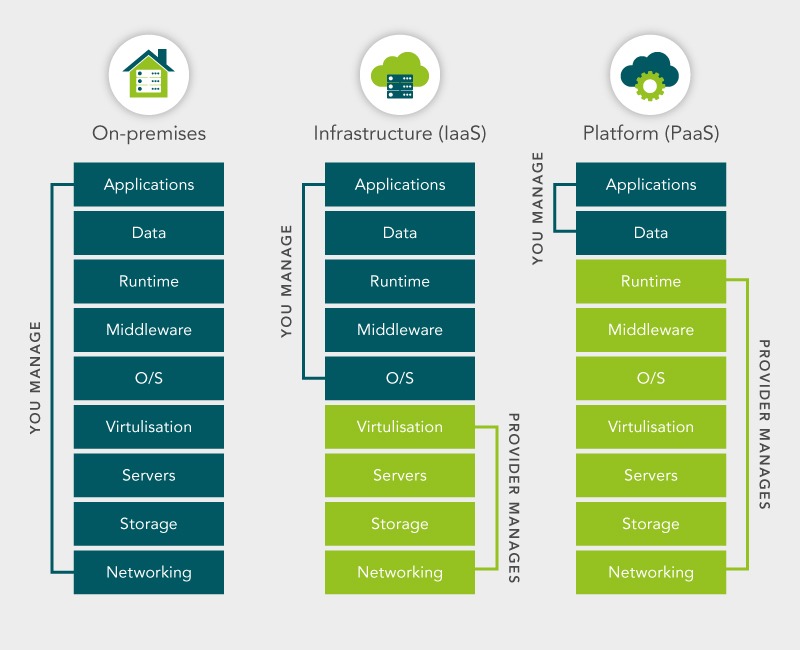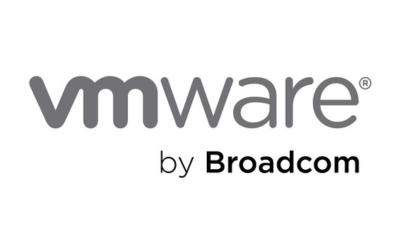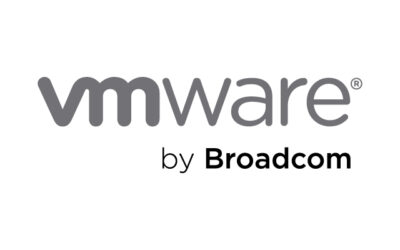When researching your options for private cloud solutions you may have come across the term “managed cloud”. Confusingly, “managed” means different things to different providers and in turn this can lead to misaligned expectations on the deliverables from managed cloud services.
The phrase “managed cloud” has two parts. A cloud is a computer system that is using virtualisation to store, process and manage data, often using remotely hosted servers. A managed cloud describes a cloud platform that is, at least in part, being operated by a third party to reduce the workload of the cloud user. However, there are several cloud services (like PaaS and IaaS) which differ from each other based on how much the cloud provider is managing, so people disagree on what makes a cloud a managed cloud.
Managed Cloud – IaaS
Some cloud providers will be referring to IaaS (Infrastructure as a Service) when using the phrase managed cloud.
Infrastructure as a Service (IaaS) – A cloud solution where you are provided with virtual resources hosted in hardware and infrastructure that you are not responsible for. You can use these virtual resources to build your cloud, with the option to expand capacity quickly and easily.
With IaaS your company is handed virtual resources, and all of the real-world responsibilities required for this (i.e. servers hosted in resilient infrastructure) are handled by your cloud provider. This is why it’s sometimes called managed cloud, since they are managing the hardware, which comes with a range of benefits:
- Your IT team have more time to focus on building and maintaining your cloud.
- Your cloud is kept online by resilient infrastructure you couldn’t have operated in-house.
- The energy-efficiency of data centres (which cloud providers use) makes your cloud more sustainable and even makes it cheaper to run that doing it in-house.
Identifying IaaS
IaaS solutions can be identified with having the below characteristics:
- Access to resources is the service
- Cost depends on use
- Flexible and highly scalable
And examples of IaaS includes:
- Amazon Web Services (AWS)
- Certain services from Microsoft Azure
- Redcentric’s VMware Cloud Services
However, when some cloud providers are talking about managed cloud, they might not be talking about IaaS at all…
Managed Cloud – PaaS
PaaS (Platform as a Service) is a step up from IaaS, where your cloud provider still handles all of the hardware requirements, but the final product they deliver to you is actually a pre-built cloud platform from which you can launch applications.
Platform as a Service (PaaS) – A cloud solution where you are provided with a virtual platform that can be used for software development. So you can focus on development because you’re not responsible for the operating system, software updates, or the hardware that hosts the platform.
With PaaS your cloud providing is supplying extra support in the form of a cloud platform that they manage for you, which is why some people would label PaaS as managed cloud and not IaaS. Since PaaS is a different type of cloud service, its advantages are different to IaaS:
- You keep all of the benefits of someone else managing your hardware.
- You also don’t have to build your cloud from scratch, but instead can go straight into launching applications.
Identifying PaaS
PaaS solutions can be identified with the following characteristics:
- The service includes several tools for developing, testing, and deploying applications
- Offers access to several users for application development
- Providers integration between web services and databases
And examples of PaaS include:
- AWS Elastic Beanstalk
- Google App Engine
- Certain services from Windows Azure
Being able to identify the differences between IaaS and PaaS will let you look beyond the label of “managed” cloud, but you also need to know which would be best for your business.
IaaS vs PaaS for your business
IaaS and PaaS can both be referred to as managed cloud because they are valuable services where a provider is managing part of the system required for you to launch your cloud. Both IaaS and PaaS have all of the hardware being operated by your cloud provider, which is great since this will make your cloud resilient against downtime.
Our graphic highlights the different levels of management from different services:
Different businesses will have different needs, which is why there’s no definitive answer to the question of what is better, PaaS or IaaS. Instead, we can look at the unique benefits of both to help show what kind of cloud service would be best for your business.
IaaS unique benefits:
- You have complete control over your cloud and can build it bespoke to your requirements; IaaS gives you the highest flexibility of any cloud service.
- Since you’ve designed the entire cloud, it’s easier to migrate this to a new provider compared to having a system built around a supplier’s cloud platform.
- The high level of customisation you have with IaaS will make it simple for you to integrate in other systems if you need to deploy a hybrid cloud solution.
Generally, IaaS is used by companies who have the required in-house expertise, and the need for a tailored cloud solution to handle a wide variety of applications.
PaaS unique benefits:
- You can still deploy a cloud solution even if you don’t have the in-house expertise to build a cloud from scratch.
- Your IT team don’t have to maintain and update the platform, so they can dedicate their time to other business critical projects.
- It’s perfect for software developers who are immediately given all of the tools they need to focus on application development.
PaaS is generally used by companies who don’t have an extensive in-house team and want to focus their resources on development.
The drawbacks of IaaS and PaaS for your business
It’s an unfortunate fact of IT that trying to work with the wrong kind of platform is a disruptive and potentially disastrous experience. This is how the vagueness of the term “managed cloud” can be dangerous, since it might lead to a company thinking their upgrading to a new solution, but instead have their workloads move to an unsuitable platform. To help prevent this, let’s look at the limitations of IaaS and PaaS.
The limitations of IaaS compared to PaaS:
- Significant internal expertise and resources are needed to build your cloud when using IaaS, since you’ve been given the resources but are effectively starting from scratch with development.
- Multi-tenant security issues can be a problem since the resources are dynamically allocated. The cloud provider has to ensure data cannot be accessed by new customers allocated the same resources. This issue can be totally avoided if your provider guarantees physical separation of cloud resources, which we do with Redcentric’s cloud.
The limitation of PaaS compared to IaaS:
- Vendor lock-in is a risk with PaaS since you use the providers platform to develop your applications. Moving cloud suppliers might be very difficult if your applications aren’t compatible with other platforms.
- You lack the customisability of IaaS with a PaaS system since you’re provided with the platform which serves as the foundation for your software development. So PaaS isn’t the solution for you if you want to build a specialised and bespoke cloud.
It’s also worth noting that in some instances, it might be that IaaS and PaaS aren’t the right fit for your business since:
- You don’t have total control over the security of your system. At least some of your cloud and its security is the responsibility of the cloud provider, which conflicts with the security requirements or certain industries like banking and finance.
- Legacy applications that run on your own hardware might not be able to handle virtualisation without time and cost-heavy rearchitecture. This is an issue that applies to whatever cloud platform you’re migrating to.
Finding the right cloud services for your business
Don’t get distracted by the label of a managed cloud service and examine exactly what the service would provide you. If you need flexibility and a cloud that’s been specifically tailored to your business, then you should be looking at IaaS providers. Whereas, if you don’t want to spend time and resources developing a cloud from scratch and want a platform that’s ready to launch applications, then you should be looking for PaaS providers.
There’s also a good chance that neither of these solutions would be a good fit for your business. As an alternative to the cloud, colocation services let you keep complete control over your servers, while upgrading their resilience and reducing costs. Or potentially your company, like a lot of others, is ready to adopt a hybrid cloud and take advantage of the combines flexibility and control it offers.
At Redcentric, the data centres we run to host our cloud services guarantee a 99.999% uptime for network and have never had a power failure. We can also offer colocation and hybrid cloud services. Get in touch to discuss how our cloud solutions can increase your flexibility, resilience and potentially save you money.




